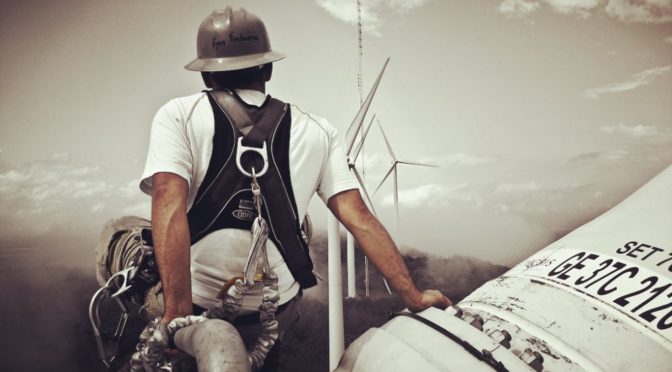Wind farm operators can now exploit technology installed on wind turbines to improve safety measures for employees involved in installation and maintenance in an industry first.
Employee safety company Safe Shores Monitoring has launched a new app ahead of All-Energy Exhibition and Conference in Glasgow that exploits telecommunications technology installed in turbines to deliver emergency response to wind farm workers affected by illness or injury.
Tom Morton, CEO of Safe Shores Monitoring, said “Concerns have been raised about the safety of the workers involved in the installation and maintenance of the UK’s wind farms, both onshore and off, with a number of high-profile accidents and fatalities having emerged in the media. Working at height remains one of the biggest causes of workplace fatalities and major injuries. In addition to this, wind farm locations are usually located in remote areas presenting a unique set of challenges, such as mobile signal, for managing risks to workers undertaking their duties without supervision by managers or colleagues which leaves them vulnerable when accident or illness strikes. Our new Companion app is uniquely suited to meeting the needs of lone or isolated workers on wind farms.”
The Safe Shores Monitoring Companion app addresses concerns about the safety of wind farm workers through the wireless connectivity installed in the turbine and transforming a smartphone into a state-of-the-art protection device. The app offers unrivalled safety features including what is thought to be the most advanced man-down detection system available and sophisticated location technologies including the phone’s GPS to trace the location of the user in need of assistance.
The app’s suite of safety functions enable the worker to manage their exposure to risk and is connected by Safe Shores Monitoring’s “Secured by Design” Archangel cloud service to deliver a contextually-aware, intelligence-driven solution giving supervisors and management teams full overview of risks, locations and activities.
Safe Shores Monitoring’s Police Preferred Specification service includes their state-of-the-art Alarm Receiving Centre (ARC) which is certified to the highest industry standards. This allows the ARC to bypass the 999 system to deliver priority access to police, fire and ambulance control rooms across the UK as required in each circumstance.
The European agency for safety and health at work (EU-OSHA) has identified that wind energy workers both onshore and offshore may be exposed to a range of common hazards throughout the entire life cycle of a wind turbine, including exposure to harmful substances; lone working; working at height; working in confined spaces; moving parts; falling objects; slips trips and falls; communication issues; and inexperienced workers.
In an industry first, Companion offers an integrated, cross-platform internet of things (IoT) connected lone worker application. Companion harnesses the array of sensors available within the smartphone device, combining sensor data with advanced algorithms to validate genuine situations of jeopardy. The app also instantly pairs with the smallest Bluetooth SOS button to come to the lone worker market. The button can be attached anywhere on the person for ease of use in case the smartphone is not accessible.
Safe Shores Monitoring, based in Glasgow, delivers location-based safety systems for over 150 UK organisations in support of their duty of care. The company customer base includes government and blue-chip organisations such as CAPITA, the Health & Safety Executive and Telefonica O2.
The company’s state-of-the-art Alarm Receiving Centre, ARC24, is based in Dunoon, Scotland. Archangel, Safe Shores Monitoring’s cloud-based platform, is the only monitoring system to be awarded as Secured By Design, a police preferred specification.


